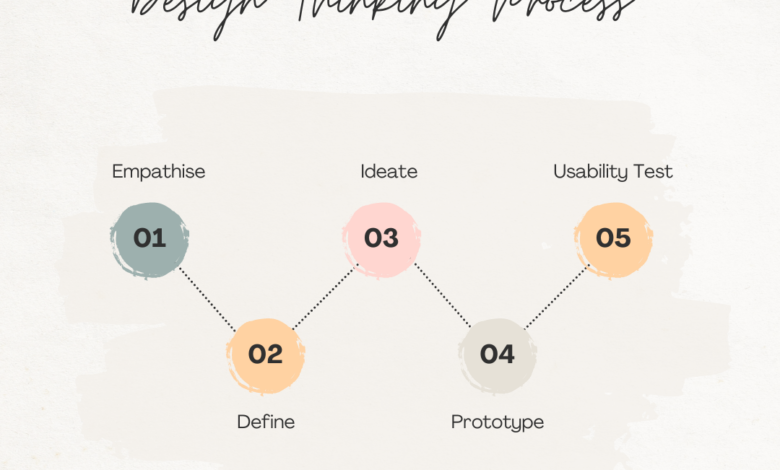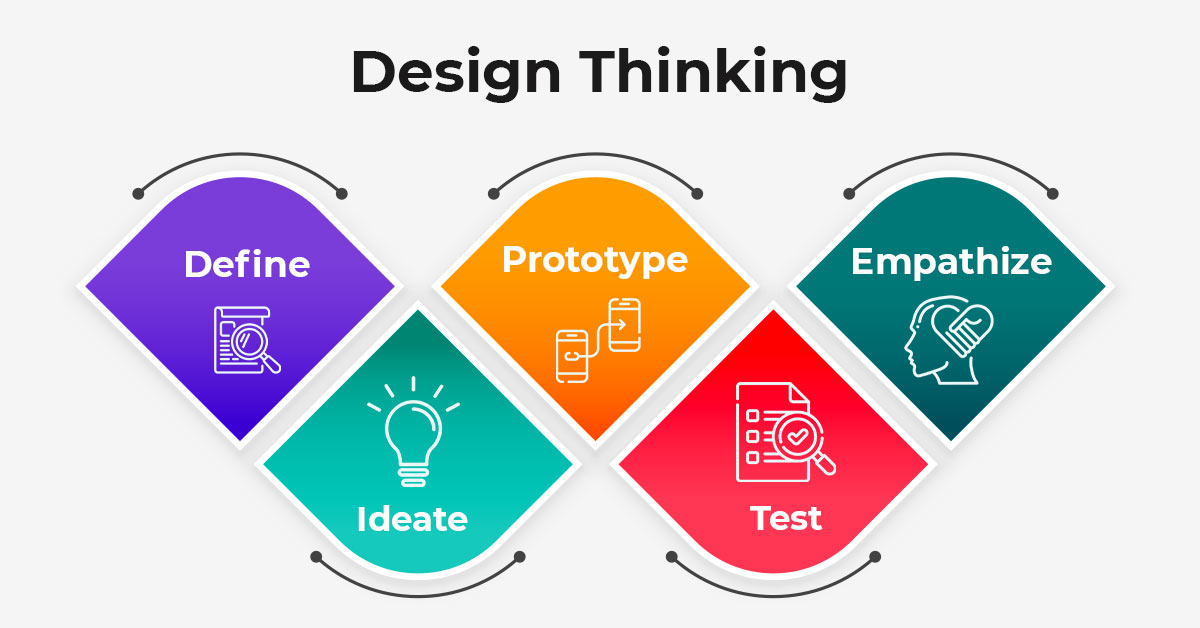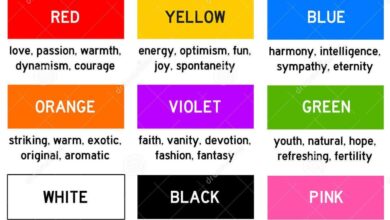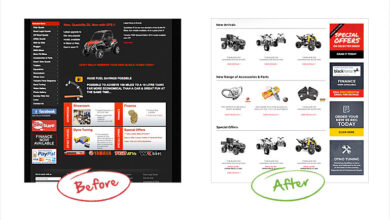
What is Design Thinking?
What is design thinking? It’s more than just a trendy buzzword; it’s a powerful human-centered problem-solving approach that’s revolutionizing how we approach challenges across industries. Design thinking encourages empathy, experimentation, and iteration to create innovative solutions that truly meet the needs of users. Forget rigid processes – design thinking embraces a flexible, creative journey, transforming complex problems into tangible, impactful results.
This process, at its core, focuses on understanding the user’s needs and desires deeply before diving into solutions. It’s about asking the right questions, exploring possibilities through brainstorming and prototyping, and rigorously testing ideas to ensure they resonate with the intended audience. We’ll explore the five key stages of this process, delve into essential tools and techniques, and examine real-world examples that showcase the transformative power of design thinking.
Defining Design Thinking
Design thinking is a human-centered problem-solving approach that emphasizes empathy, experimentation, and iteration. It’s a powerful methodology used to create innovative solutions to complex challenges, moving beyond traditional linear thinking. Instead of jumping straight to solutions, design thinking encourages a deep understanding of the problem and the needs of the people it affects. This iterative process allows for continuous refinement and improvement, leading to more effective and user-friendly outcomes.Design thinking’s core principles revolve around understanding user needs, defining problems clearly, generating diverse ideas, prototyping solutions, and testing and iterating based on feedback.
It’s a collaborative and flexible process, adaptable to various contexts and industries.
A Concise Definition of Design Thinking
Design thinking is a problem-solving approach that prioritizes understanding user needs and iteratively developing solutions through experimentation and feedback. It’s a human-centered process that encourages creativity and collaboration to achieve innovative outcomes.
Real-World Examples of Design Thinking
The power of design thinking lies in its practical application. Many companies have successfully utilized this approach to create impactful products and services. Here are three compelling examples:
| Company | Project | Design Thinking Phase Used | Outcome |
|---|---|---|---|
| IDEO | Redesigning the shopping cart experience for a major retailer. | Empathize (understanding shopper frustrations), Define (clarifying problem areas), Ideate (brainstorming new cart features), Prototype (creating digital mockups), Test (user testing and feedback). | Increased online sales conversion rates by 15% through a more intuitive and user-friendly shopping cart. |
| Apple | Development of the iPhone. | Empathize (understanding user needs for mobile communication and computing), Define (identifying a market gap for a user-friendly smartphone), Ideate (exploring various design concepts and functionalities), Prototype (creating multiple device prototypes), Test (extensive user testing and feedback iterations). | Creation of a revolutionary smartphone that redefined the mobile industry and established a new standard for user experience. |
| The Proctor & Gamble Company | Development of the Swiffer WetJet. | Empathize (observing how people cleaned floors), Define (identifying the need for a more efficient and less messy floor cleaning solution), Ideate (exploring various design concepts for a wet cleaning tool), Prototype (creating and testing multiple prototypes), Test (gathering user feedback on effectiveness and ease of use). | Creation of a successful and widely adopted floor cleaning product that significantly improved cleaning efficiency and convenience. |
The Design Thinking Process
Design thinking isn’t just a buzzword; it’s a human-centered approach to problem-solving that emphasizes empathy, experimentation, and iteration. It’s a powerful methodology that moves beyond traditional linear processes, embracing a more flexible and iterative approach to achieve innovative and user-centric solutions. Understanding its five distinct stages is key to harnessing its full potential.
The design thinking process is cyclical and iterative, meaning you can loop back through stages as needed. This iterative nature is crucial for refining solutions and ensuring they effectively address the identified problem. Each stage builds upon the previous one, creating a fluid and dynamic process of discovery and creation.
The Five Stages of Design Thinking
The five stages – Empathize, Define, Ideate, Prototype, and Test – form a powerful framework for tackling complex challenges. They represent a journey from understanding the user to validating a solution, with ample opportunity for refinement along the way.
- Empathize: This initial stage focuses on deeply understanding the user’s needs, motivations, and pain points. It involves conducting user research, including interviews, observations, and surveys, to gain valuable insights into their experiences. For example, imagine designing a new mobile banking app. The empathize stage would involve interviewing potential users to understand their current banking habits, frustrations, and desired features.
- Define: Based on the insights gathered during the empathize stage, this stage involves clearly articulating the problem you’re trying to solve. This often involves defining a user-centered problem statement that focuses on the user’s needs rather than a technical solution. In our banking app example, the defined problem might be: “Users struggle to manage their finances effectively due to a lack of intuitive budgeting tools and real-time transaction tracking.”
- Ideate: This is the brainstorming phase where you generate a wide range of potential solutions. Techniques like brainstorming, sketching, and mind-mapping can help to explore various possibilities. For the banking app, this stage might involve sketching different interface designs, brainstorming features like personalized budgeting tools, and exploring different ways to present financial data.
- Prototype: Prototyping involves creating tangible representations of your ideas, allowing you to test and refine them. Prototypes can range from low-fidelity sketches to high-fidelity interactive models. In our example, prototypes could be low-fidelity paper mockups of the app’s interface or a functional prototype built with a prototyping tool.
- Test: This crucial stage involves gathering feedback on your prototypes from your target users. This feedback helps identify areas for improvement and informs further iterations of the design. For the banking app, testing might involve user testing sessions where users interact with the prototype and provide feedback on its usability and effectiveness.
The Importance of Iteration in Design Thinking
Iteration is the heart of design thinking. It’s the process of repeatedly cycling through the five stages, refining your understanding of the problem and your solutions with each iteration. Each cycle builds upon the previous one, leading to a more refined and effective solution. For instance, after testing a prototype, you might discover a usability issue that requires revisiting the ideation and prototyping stages.
This iterative process allows for continuous improvement and ensures the final solution is well-suited to the users’ needs.
Design Thinking Compared to Other Problem-Solving Methodologies
While other problem-solving methodologies, like the scientific method or lean startup, also aim to find solutions, design thinking distinguishes itself through its focus on human-centeredness and iterative experimentation. The scientific method emphasizes hypothesis testing and data analysis, while lean startup prioritizes rapid prototyping and customer validation. Design thinking incorporates elements of both but emphasizes understanding user needs and generating creative solutions through empathy and collaboration.
For example, a lean startup approach might focus on building a Minimum Viable Product (MVP) and testing it quickly in the market, whereas design thinking would prioritize understanding the user’s needs before even beginning to build the product. The scientific method, on the other hand, would focus on testing a specific hypothesis through controlled experiments, whereas design thinking embraces a more flexible and exploratory approach.
Visual Representation of the Design Thinking Process
The design thinking process can be visualized as a cyclical flow, emphasizing the iterative nature of the approach.
- Empathize: Imagine a user research session, perhaps a group of people discussing their experiences with a particular product or service. The focus is on understanding their feelings, needs, and pain points.
- Define: Picture a whiteboard covered in sticky notes, each summarizing a key insight from the user research. The team collaboratively works to distill these insights into a clear problem statement.
- Ideate: Envision a lively brainstorming session, with people sketching ideas, writing on whiteboards, and engaging in lively discussions. The goal is to generate a wide range of diverse and innovative ideas.
- Prototype: Imagine a table scattered with various prototypes – from rough sketches to functional models. These prototypes represent tangible expressions of the ideas generated in the previous stage.
- Test: Picture users interacting with the prototypes, providing feedback and insights. The team observes and collects data to inform the next iteration of the design process.
Key Tools and Techniques
Design thinking relies on a robust toolkit of methods and techniques to effectively navigate its iterative process. These tools aren’t just add-ons; they’re integral to understanding users, generating innovative ideas, and creating solutions that truly resonate. Choosing the right tools depends on the specific challenge and stage of the design process, but some consistently prove invaluable.
Let’s explore five essential tools that form the backbone of many successful design thinking projects, along with a deeper dive into the creation and use of user personas and the power (and pitfalls) of brainstorming.
User Personas
User personas are fictional representations of your ideal users. They are not just demographic profiles; they capture users’ goals, motivations, frustrations, and behaviors. Creating robust personas requires thorough user research, including interviews, surveys, and observation. This research informs the persona’s characteristics, providing a rich, nuanced understanding of who you’re designing for. For example, a persona for a new fitness app might be “Sarah,” a 32-year-old working mother who wants to incorporate more exercise into her busy schedule but struggles with finding time and motivation.
Sarah’s persona would detail her daily routine, her fitness goals, her technological proficiency, and her preferred communication styles. The persona then serves as a constant reminder of the target user throughout the design process, guiding decision-making and ensuring the solution remains user-centric.
Empathy Maps
Empathy maps visually represent a user’s perspective, feelings, and thoughts. They’re a collaborative tool, often created during workshops, to help design teams understand their users on a deeper emotional level. A simple empathy map is typically divided into four quadrants: “Says” (what the user says explicitly), “Thinks” (their internal thoughts and beliefs), “Feels” (their emotions and sentiments), and “Does” (their actions and behaviors).
A fifth quadrant, “Pain Points,” can also be included. Let’s consider a scenario: designing a new online banking system. For a user who is technologically challenged, the empathy map might show “Says: ‘I just want to check my balance’,” “Thinks: ‘This is too complicated’,” “Feels: Frustrated and anxious,” “Does: Avoids using online banking whenever possible,” and “Pain Points: Difficulty navigating the website, fear of making mistakes.” This visual representation facilitates shared understanding and helps the team empathize with the user’s experience.
Storyboards, What is design thinking
Storyboards are sequential visual representations of a user’s interaction with a product or service. They’re particularly useful for illustrating user journeys and identifying potential pain points. Each frame in the storyboard depicts a scene, often with a brief caption describing the action and the user’s emotional state. For example, a storyboard for an online ordering system might show a user searching for a product, adding it to their cart, encountering a shipping delay, and finally receiving a confirmation email.
This visual narrative helps designers anticipate potential usability issues and design solutions that address them proactively.
Brainstorming
Brainstorming is a widely used ideation technique that encourages the generation of a large number of ideas in a short period. Its benefits include fostering creativity, overcoming mental blocks, and promoting collaboration. However, brainstorming also has limitations. The quality of ideas can vary significantly, and the process can be dominated by a few vocal participants, potentially silencing quieter voices.
Effective brainstorming requires a facilitator to ensure inclusivity, manage time effectively, and focus the discussion on a specific problem. Techniques like “round-robin” brainstorming (each participant shares an idea in turn) or using visual aids can improve participation and idea generation.
User Journeys
User journeys map out the steps a user takes to achieve a specific goal when interacting with a product or service. They provide a holistic view of the user experience, highlighting touchpoints, pain points, and opportunities for improvement. Creating a user journey involves identifying the user’s goal, mapping out the steps involved, and documenting the user’s emotions and actions at each stage.
For example, the user journey for booking a flight might include searching for flights, comparing prices, selecting a flight, providing passenger information, paying for the flight, and receiving a confirmation email. Analyzing the user journey helps designers identify areas where the user experience can be improved, such as simplifying the booking process or providing more transparent information about fees.
Applying Design Thinking

Source: dpuerp.in
Design thinking, at its core, is all about empathy and iteration. It’s about understanding your audience deeply before crafting solutions, and that’s exactly why I found the article on getting it on with youtube so insightful. Applying design thinking principles to YouTube content creation means really understanding your viewers’ needs and preferences before hitting that upload button.
Ultimately, successful YouTube channels are built on a solid foundation of user-centered design.
Design thinking, with its human-centered approach, isn’t confined to a single discipline. Its iterative process of empathizing, defining, ideating, prototyping, and testing offers a powerful framework for tackling complex challenges across diverse fields, leading to innovative and effective solutions. This adaptability is what makes design thinking such a valuable tool in today’s multifaceted world.Design thinking’s application across various sectors results in tangible improvements and breakthroughs.
Its flexible nature allows it to be tailored to specific contexts, ensuring relevance and efficacy. The following sections explore these applications with real-world examples.
Design Thinking in Business
Businesses leverage design thinking to understand customer needs better, develop innovative products and services, and improve operational efficiency. For example, IDEO, a renowned design and innovation consultancy, used design thinking to redesign the experience of using a hospital. By deeply understanding the needs of patients, doctors, and nurses, they created a more intuitive and efficient hospital layout, improving patient flow and overall satisfaction.
Another example is the development of the Apple iPhone, where design thinking played a crucial role in creating a user-friendly and aesthetically pleasing device that revolutionized the mobile phone industry. The iterative process allowed Apple to refine the product based on user feedback, resulting in a highly successful product.
Design Thinking in Technology
In the technology sector, design thinking helps create user-friendly interfaces, develop innovative software solutions, and improve the overall user experience. Consider the development of user-friendly mobile banking apps. Through user research and prototyping, designers identified pain points in traditional banking systems and developed intuitive interfaces that simplified tasks such as bill payments and money transfers. Similarly, the design of many successful video games heavily relies on design thinking to create immersive and engaging experiences for players.
By testing game mechanics and user interfaces iteratively, developers can refine the game based on player feedback, leading to a more enjoyable and successful product.
Design Thinking in Social Impact
Design thinking’s ability to address human needs makes it particularly effective in creating solutions for social issues. Organizations use it to design programs and initiatives that address challenges related to poverty, healthcare, and education. For instance, the organization d.school at Stanford has used design thinking to develop solutions for improving access to clean water in developing countries. By understanding the local context and the needs of the communities, they were able to design cost-effective and sustainable solutions.
Another example involves the creation of accessible educational materials for visually impaired students, where design thinking facilitated the development of innovative tactile learning tools.
Hypothetical Scenario: Reducing Food Waste in University Cafeterias
Imagine a university struggling with significant food waste in its cafeterias. Students often take more food than they can eat, leading to considerable environmental and economic impact. This scenario presents an ideal opportunity to apply design thinking.
Applying Design Thinking to Reduce Food Waste
The steps involved in solving this problem using design thinking would be:
Empathize: Understanding the Problem
The team would conduct observations and interviews with students and cafeteria staff to understand the reasons behind food waste. This might involve observing student behavior in the cafeteria, conducting surveys, and interviewing students and staff about their food choices and habits. They’d aim to uncover the underlying motivations, such as portion sizes, lack of awareness of food waste consequences, or the pressure to take large portions.
Define: Clearly Articulating the Problem
Based on the empathy phase, the team would clearly define the problem statement. For instance, the problem might be defined as: “To reduce food waste in the university cafeteria by 50% within six months by encouraging students to take only what they can eat.”
Ideate: Brainstorming Potential Solutions
The team would brainstorm various solutions to address the defined problem. This might involve ideas like implementing smaller portion sizes, introducing a “take what you need” system, creating visually appealing food displays, running educational campaigns about food waste, or introducing a composting system.
Prototype: Creating and Testing Solutions
The team would develop prototypes of the chosen solutions. This could involve designing new food trays, creating educational posters, or developing a mobile app that helps students estimate portion sizes. These prototypes would then be tested in the cafeteria with a small group of students to gather feedback.
Test: Refining Solutions Based on Feedback
Based on the feedback from the prototype testing, the team would refine the chosen solutions. This iterative process allows for continuous improvement and ensures that the final solution is effective and user-friendly. For example, if the initial prototype of a mobile app is found to be difficult to use, the team would redesign it based on user feedback before a wider rollout.
Benefits and Challenges: What Is Design Thinking

Source: medium.com
Design thinking, while offering a powerful framework for innovation, isn’t a magic bullet. Its successful implementation hinges on understanding both its significant advantages and the potential hurdles it presents. Successfully navigating these challenges is key to unlocking design thinking’s full potential within any organization.Implementing design thinking offers a wealth of benefits, transforming how organizations approach problem-solving and innovation.
It fosters a more human-centered approach, leading to products, services, and experiences that genuinely resonate with users. This, in turn, boosts customer satisfaction, brand loyalty, and ultimately, the bottom line. However, the journey isn’t always smooth; challenges exist that require careful consideration and proactive strategies for mitigation.
Potential Benefits of Design Thinking
Design thinking’s benefits extend across various organizational levels and functions. Improved customer satisfaction is a direct result of creating solutions deeply rooted in user needs. This leads to increased customer loyalty and advocacy, which translates to stronger market positioning and competitive advantage. Internally, design thinking fosters a more collaborative and innovative work culture, empowering employees to actively participate in problem-solving and contribute creative ideas.
The iterative nature of the process allows for early identification and mitigation of risks, reducing wasted resources and time. Ultimately, successful design thinking initiatives lead to more effective and efficient solutions that directly contribute to the organization’s overall success. For example, IDEO’s work with Proctor & Gamble on redesigning their Swiffer cleaning product showcases how design thinking led to a vastly improved product and a significant increase in market share.
Potential Challenges of Adopting Design Thinking
While the potential benefits are substantial, adopting a design thinking approach presents several challenges. One common hurdle is resistance to change within established organizational structures and hierarchies. Traditional, linear processes may clash with the iterative and collaborative nature of design thinking. Another challenge lies in the time and resource commitment required. Design thinking demands dedicated time for research, prototyping, and testing, which can be a significant investment, especially for organizations accustomed to more rapid, streamlined processes.
Furthermore, measuring the success of design thinking initiatives can be complex, as the outcomes are often qualitative rather than solely quantitative. Lack of skilled facilitators and trained personnel can also hinder effective implementation. For instance, a company attempting to implement design thinking without adequately training its employees may struggle with effective brainstorming sessions or accurate user research.
Strategies for Overcoming Challenges
Successfully implementing design thinking requires proactive strategies to address potential challenges. Championing design thinking from leadership levels is crucial to fostering a culture of innovation and overcoming resistance to change. This involves clearly communicating the benefits and providing the necessary resources and support. Providing adequate training and development for employees equips them with the necessary skills and knowledge to effectively participate in the design thinking process.
Establishing clear metrics and methods for evaluating the success of design thinking projects helps demonstrate value and justify the investment. Starting with small-scale pilot projects allows organizations to test and refine their approach before full-scale implementation, minimizing risk and building confidence. For example, a small team could be tasked with using design thinking to improve a specific internal process before expanding the methodology across the entire organization.
This phased approach allows for adjustments based on initial results.
Advantages and Disadvantages of Design Thinking
Let’s summarize the key advantages and disadvantages:
- Advantages:
- Increased customer satisfaction and loyalty
- Improved innovation and creativity
- Enhanced collaboration and teamwork
- Reduced risk and wasted resources
- More effective and efficient solutions
- Disadvantages:
- Resistance to change within organizations
- Significant time and resource commitment
- Difficulty in measuring success
- Need for skilled facilitators and trained personnel
- Potential for scope creep if not managed effectively
Illustrative Examples
Design thinking, while a powerful methodology, truly shines when applied to real-world scenarios. Seeing it in action helps solidify understanding and demonstrates its versatility. Let’s explore some diverse examples to illustrate its effectiveness across different domains.
Improving User Experience for a Mobile Application
This project focused on redesigning the user interface (UI) of a popular fitness tracking app. The app, while functional, suffered from low user engagement and negative reviews citing confusing navigation and a cluttered design. The design thinking process was employed to address these issues.
Empathize: User research involved conducting surveys, interviews, and usability testing with existing users. This revealed frustrations with the app’s complexity, difficulty in tracking progress, and lack of personalized feedback. We created user personas to represent different user groups and their needs.
Define: The core problem was defined as a lack of intuitive navigation and personalized feedback, leading to low user engagement and retention. We formulated a problem statement: “How might we improve the user experience of the fitness tracking app to increase engagement and retention?”
Ideate: Brainstorming sessions generated a wide range of ideas, including simplifying the navigation menu, incorporating personalized workout suggestions, and adding gamification elements. We used sketching and wireframing to visualize potential solutions.
Prototype: Low-fidelity prototypes were created using paper and digital tools to test the feasibility and usability of the proposed solutions. These prototypes allowed for quick iteration and feedback from users.
Test: Usability testing was conducted with the refined prototypes. Users were observed interacting with the app, and their feedback was used to further refine the design. This iterative process continued until a satisfactory user experience was achieved.
Addressing a Social Issue: Reducing Food Waste
This project tackled the significant social issue of food waste in a university cafeteria. The cafeteria generated substantial food waste daily, contributing to environmental concerns and financial losses.
Empathize: We observed student behavior in the cafeteria, conducted interviews with cafeteria staff, and analyzed food waste data. This revealed that students often over-served themselves, leading to significant plate waste. Factors like unclear food labeling and lack of information about portion sizes also contributed.
Define: The core problem was identified as student behavior combined with a lack of awareness and information leading to excessive food waste. The problem statement: “How might we reduce food waste in the university cafeteria by influencing student behavior and improving communication?”
Ideate: Solutions included introducing smaller portion sizes, clearer food labeling with nutritional information and estimated calorie counts, and implementing a visual campaign to raise awareness about food waste.
Prototype: We prototyped new food labels, redesigned the cafeteria signage, and created mock-ups of a campaign promoting mindful food choices.
Test: The prototypes were implemented on a trial basis. We monitored food waste levels, collected student feedback through surveys, and observed student behavior. The results informed further adjustments and refinements.
User-Centered Design in a Design Thinking Framework: A Case Study
A website redesign for a non-profit organization exemplifies user-centered design within the design thinking framework. The existing website was visually outdated and difficult to navigate, hindering donations and volunteer recruitment.
The emphasis was placed on understanding the needs and behaviors of the target audience (potential donors and volunteers). Through user interviews and surveys, we identified key pain points, such as difficulty finding information about volunteering opportunities and a lack of clear call-to-action for donations. The design process prioritized user feedback at each stage, resulting in a website that was both aesthetically pleasing and highly functional, leading to a significant increase in donations and volunteer applications.
Summary of Projects
| Project Description | Design Thinking Stages Applied | Results Achieved |
|---|---|---|
| Improving User Experience for a Mobile Fitness App | Empathize, Define, Ideate, Prototype, Test | Increased user engagement and retention; improved user satisfaction based on app store reviews and usage data. |
| Reducing Food Waste in a University Cafeteria | Empathize, Define, Ideate, Prototype, Test | Significant reduction in food waste; increased student awareness of food waste issues. Quantifiable results were measured through weight of discarded food. |
| Website Redesign for a Non-profit | Empathize, Define, Ideate, Prototype, Test | Increased donations and volunteer applications; improved website usability and accessibility. Specific metrics like website traffic and conversion rates were tracked. |
Final Thoughts
Ultimately, design thinking is a mindset shift—a move away from solely focusing on technical solutions to prioritizing human needs and experiences. By embracing empathy, experimentation, and iteration, we can create products, services, and experiences that are not only innovative but also genuinely valuable and impactful. Whether you’re a seasoned professional or just starting your design journey, understanding and applying design thinking principles can significantly enhance your problem-solving capabilities and lead to truly groundbreaking results.
So, are you ready to embrace the design thinking revolution?
FAQ Resource
What’s the difference between design thinking and traditional problem-solving?
Traditional problem-solving often follows a linear, analytical approach. Design thinking, conversely, is iterative and embraces ambiguity, prioritizing user needs and creative exploration.
Can design thinking be used for non-design related problems?
Absolutely! Design thinking’s principles are applicable across diverse fields, from business and technology to social impact and healthcare.
How long does a design thinking project typically take?
The duration varies greatly depending on project scope and complexity. Some projects might take weeks, while others could span months.
Is design thinking only for large organizations?
No, design thinking can be effectively utilized by individuals, small teams, and large corporations alike. The core principles remain consistent regardless of scale.





